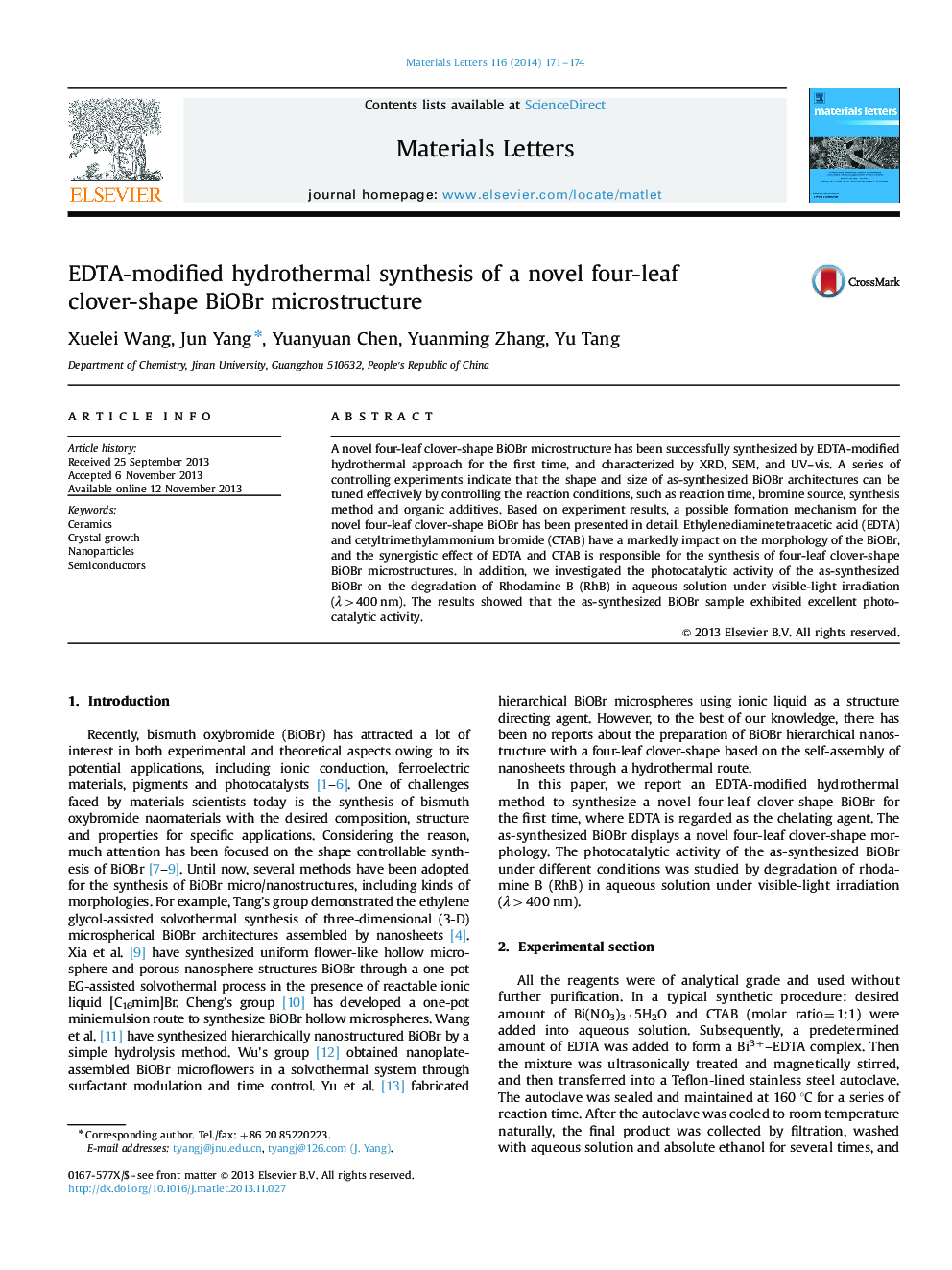| Article ID | Journal | Published Year | Pages | File Type |
|---|---|---|---|---|
| 1644685 | Materials Letters | 2014 | 4 Pages |
•A novel four-leaf clover-shape BiOBr microstructure has been successfully synthesized by EDTA-modified hydrothermal approach for the first time.•The synergistic effect synergy effect of EDTA and CTAB is responsible for the synthesis of four-leaf clover-shape BiOBr nanostructures.
A novel four-leaf clover-shape BiOBr microstructure has been successfully synthesized by EDTA-modified hydrothermal approach for the first time, and characterized by XRD, SEM, and UV–vis. A series of controlling experiments indicate that the shape and size of as-synthesized BiOBr architectures can be tuned effectively by controlling the reaction conditions, such as reaction time, bromine source, synthesis method and organic additives. Based on experiment results, a possible formation mechanism for the novel four-leaf clover-shape BiOBr has been presented in detail. Ethylenediaminetetraacetic acid (EDTA) and cetyltrimethylammonium bromide (CTAB) have a markedly impact on the morphology of the BiOBr, and the synergistic effect of EDTA and CTAB is responsible for the synthesis of four-leaf clover-shape BiOBr microstructures. In addition, we investigated the photocatalytic activity of the as-synthesized BiOBr on the degradation of Rhodamine B (RhB) in aqueous solution under visible-light irradiation (λ>400 nm). The results showed that the as-synthesized BiOBr sample exhibited excellent photocatalytic activity.
Graphical abstractFigure optionsDownload full-size imageDownload as PowerPoint slide
